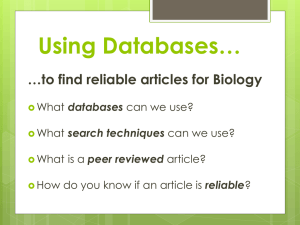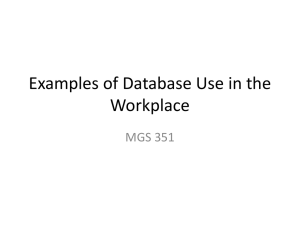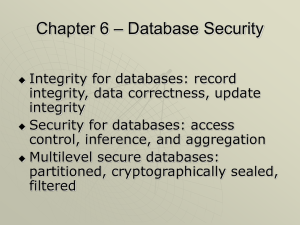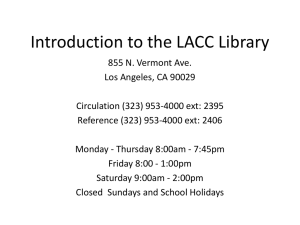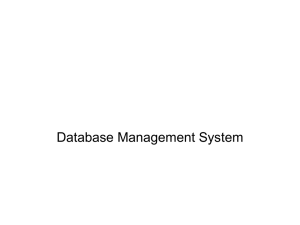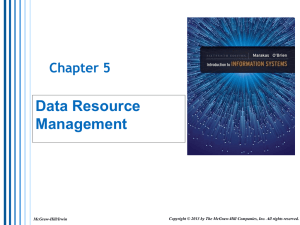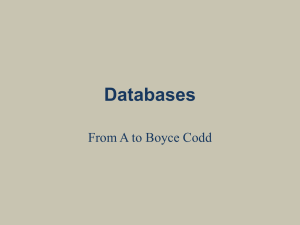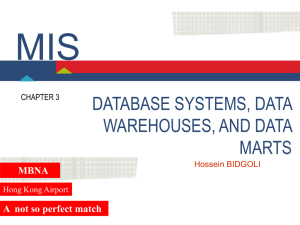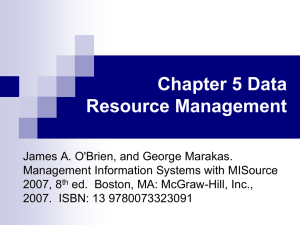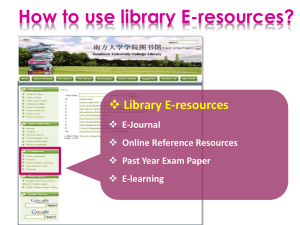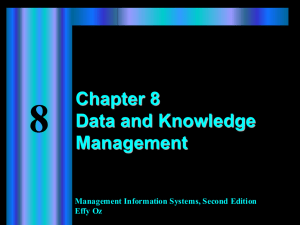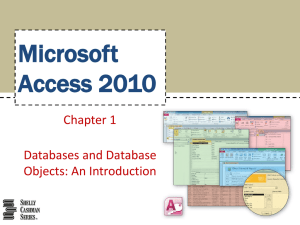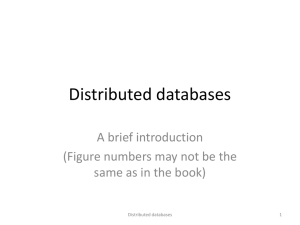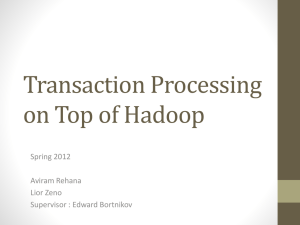Chapter No. 04 - information systems and it audit
advertisement
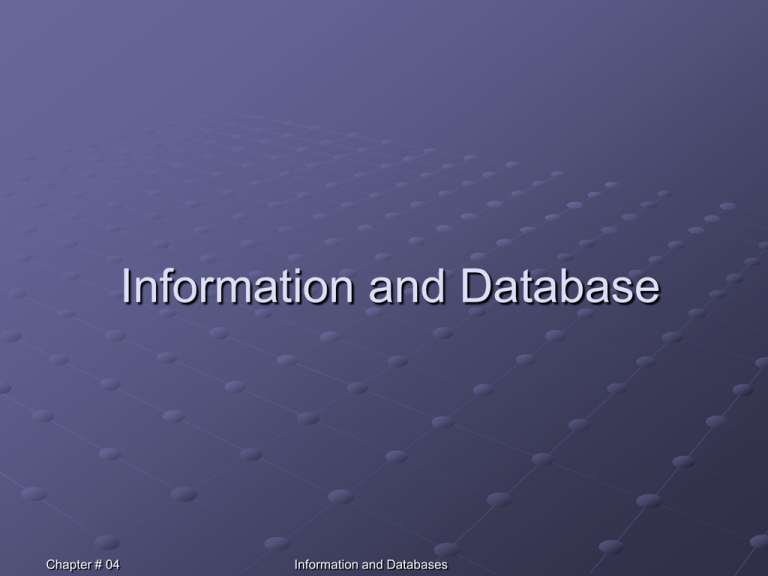
Information and Database Chapter # 04 Information and Databases Database “Refers to a structured collection of electronically stored data which is controlled, accessed through computers based on predefined relationships between predefined types of data items related to a specific business situation or problem” “Is an organized collection of records/information that is made-up of related records.” Chapter # 04 Information and Databases Database Management System : A DBMS is an integrated set of programs used to define, update and control databases. File : Is a set of related records that contains the same fields in the same order and same format. Record : Record is a set of fields, each of which is related to the same thing, person or event. Field : Key : A field is a group of characters that have a predefined meaning. A key is field that uniquely identifies which person, thing or event the record describes. Chapter # 04 Information and Databases Types of Data Pre-defined data Items Text Images Audio Video Chapter # 04 Information and Databases Data Modeling : The process of defining what data is used or produced in an information system and how that data is organized. Entities :The specific things, database collects data about. Entity type :The kind of things, data is collected about Relationship :The way specific entities of one type might related to specific entities of the other type Chapter # 04 Information and Databases Entity Relation Diagram :Technique for identifying the entity types in a situation and diagramming the relationship between those entity types. Type of Relationships : •One-to-One relationship •One to Many relationship •Many to Many relations Chapter # 04 Information and Databases Relational Structure of Databases Primary Key Filed:A column which uniquely identifies a in a table Foreign Key: Which refer to a specific record of an other table. Properties of Key Field : Unique, Not Null, and Indexed Data Modeling – Entity Relation Diagram Data Modeling – Entity Relation Diagram Types of Databases Relational Databses Multi-Dimensional Databases Data Warehouse Geographical Information systems Text and Image databases Hyper Databases and Web Web page HTML URL Indexes and Search Engines Chapter # 04 Information and Databases Data Warehousing Roles of DBMS Controlling and Organizing data to increase its value Efficient way to organize data Improves data Accuracy Discouraging Data Redundancy Flexibility Supports Data Security (controlled access / recovery procedures) Making Programming more efficient Provides consistent and centralized defining methods Chapter # 04 Information and Databases Range of DBMS Functions Defining the database Data Definition Data Dictionary Methods of Accessing data in a Computer Systems Sequential Access Direct Access Indexed Sequential Access (ISAM) Processing transactions Controlling Distributed Databases Backup and Recovery Supporting Database Administration Chapter # 04 Information and Databases Evaluating Data as a Source (Usefulness) Information Quality : Accuracy Completeness Timeliness Precision Age Source Information Accessibility: Availability Admissibility Information Presentation : Level of Summarization Format Information Security : Access Restriction Chapter # 04 Encryption Information and Databases Models as Component of IS Mental Models Mathematical Model What-if Questions Virtual Reality :The Ultimate interactive Model Chapter # 04 Information and Databases
